|
Cambodia (2021 Deadline)
Diagnostic investigation of water eutrophication in Stung Treng Ramsar Site, Cambodia
PI: Saret Bun (saret@itc.edu.kh), Institute of Technology of Cambodia
Co-PI: Sothearoth Chea, YEA Catalyst
Project Dates: June 2022 – August 2023
Project Overview
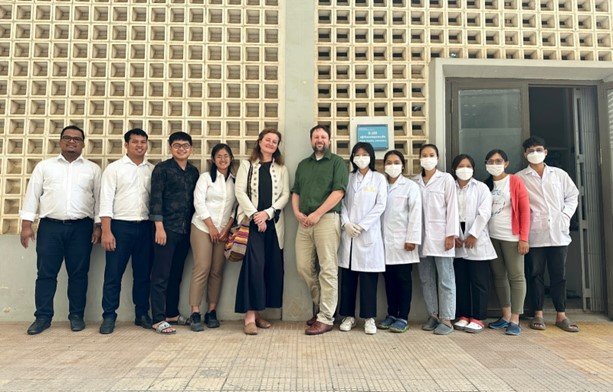 | | Staff from USAID (Aaron Burr) and NAS (Lina Stankute Alexander) visit PEER PI Dr. Saret Bun (left) and his team at Institute of Technology of Cambodia in Phnom Penh, February 2023 |
The Stung Treng Ramsar Site covers a stretch of approximately 37 km of the Mekong River in Stung Treng Province, northern Cambodia. The lower boundary of the site is approximately 3-4 km upstream from Stung Treng town, extending upstream to within 2-3 km of the border with Laos. The total area of the site is estimated as 14,600 hectares, and it is home to a great diversity of wildlife—mammals, birds, reptiles, fish, and vegetation. Four critically endangered species have been found in this site: Irrawaddy dolphin, Sarus crane, Mekong giant catfish, and Siamese crocodile. Many villagers live along the Mekong River and rely on fisheries and forestry for food security and livelihoods. Recent development changes, including hydropower plants and shifts in agricultural land use, have posed a threat to the site’s ecological systems, including dramatic decline in the Irrawaddy dolphin population. Yet little is known about this area, especially its hydrology—including water quality—and biology.
Having no historical data to track the changes in ecological conditions makes it hard to protect nature and respond to local disasters. Residents are concerned about algae accumulation, which blooms in freshwater during warmer weather and slow-flowing river conditions. They are the result of the water eutrophication process, which occurs through the presence of excessive nutrients in the water stream. While relevant stakeholders have raised concerns about algae accumulation, no single scientific study existed on the cause, prior to the current PEER study. This project aimed to investigate the water eutrophication at Stung Treng Ramsar Site in Cambodia, using a field survey questionnaire, water quality assessment and algae species identification.
Final Summary of Project Activities
Researchers from the PEER project began with an introductory seminar for all project stakeholders, including rangers, the community fishery chief, and community fishery members from three towns, gathering their input on specific sites where water sampling would take place. Four discussion groups covered the community’s perspective on the health of the Mekong River, changes in ecosystems around the river, changes of land use around the site, and algae blooms at the site. At the end of the session, the research team demonstrated the water sampling process for the community.
The team also held a community training on the water sampling process and conducted practice sampling sessions for village members paired with researchers. Participants included eleven residents from three villages, as well as the staff from MyVillage organization who also wanted to apply this type of research in their target community fisheries in Siem Pang Commune.
Researchers collected water samples from nine different sites across four different time periods (both dry and rainy season) and analyzed them for various chemical and physical properties such as dissolved oxygen, conductivity, resistivity, salinity, pH, and turbidity. Additional analysis at the laboratory included total nitrogen, total phosphorus, ammonia, orthophosphate, chemical oxygen demand, and hardness.
Through surveys of the local communities, the PEER team found that the highest rate of algae bloom was three years prior to their survey, and most residents considered the bloom harmful to the river. Almost all surveyed said the most common place to find algae blooms was attached to large stones in the river. Their water quality findings identified the highest pollution in upstream and downstream zones during the rainy season and in the upstream and middle stream zones during the dry season. The PEER team identified algae species found as filamentous species, cyanobacteria, and synedra species. These types of algae can affect human skin and health through skin absorption and ingestion pathways, respectively.
The team presented their findings on water analysis and algae species identification at a workshop attended by members of eight community fisheries from three villages (Koh Snaeng, Phum Thmey, and Orun) and a local partner from Angkor Meas Stung Treng town. Community members expressed a desire to continue the project to monitor the algae situation in the area even though the algae level was decreasing at the time, and they asked the research team to investigate the quality of the drinking water.
The team has received four new grants, worth a total of $43,000, connected to their work researching water quality.
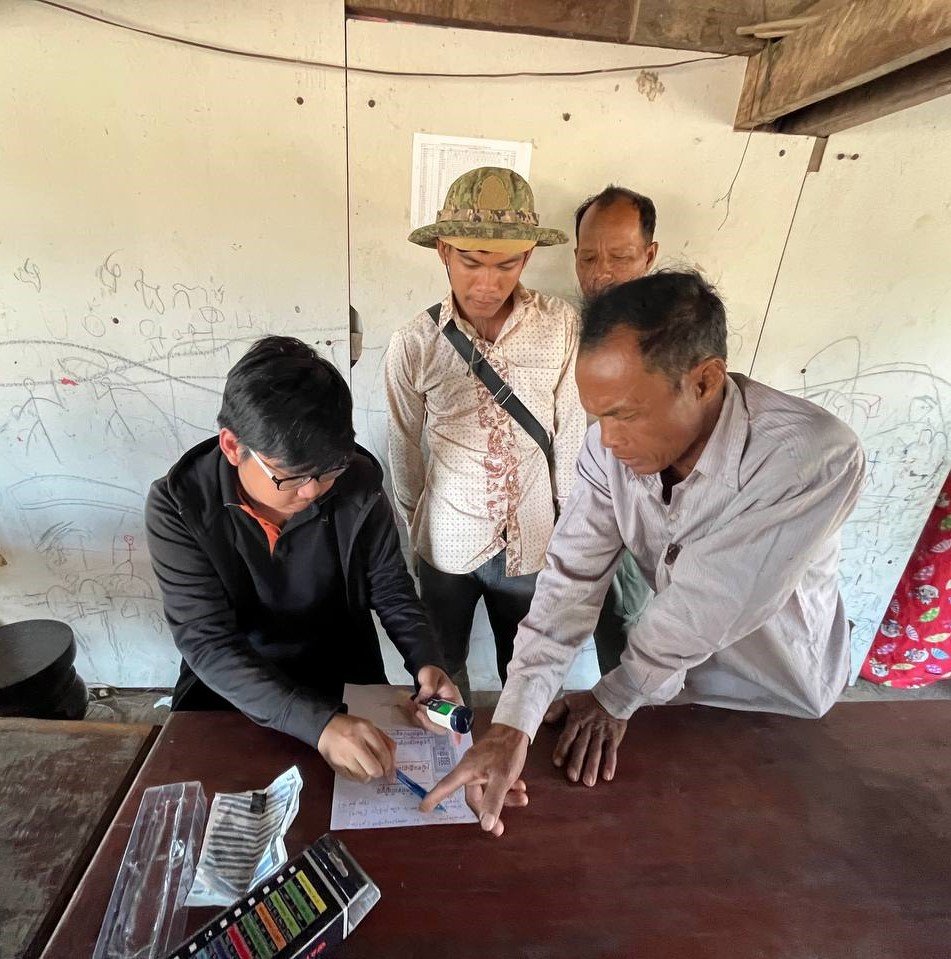 | 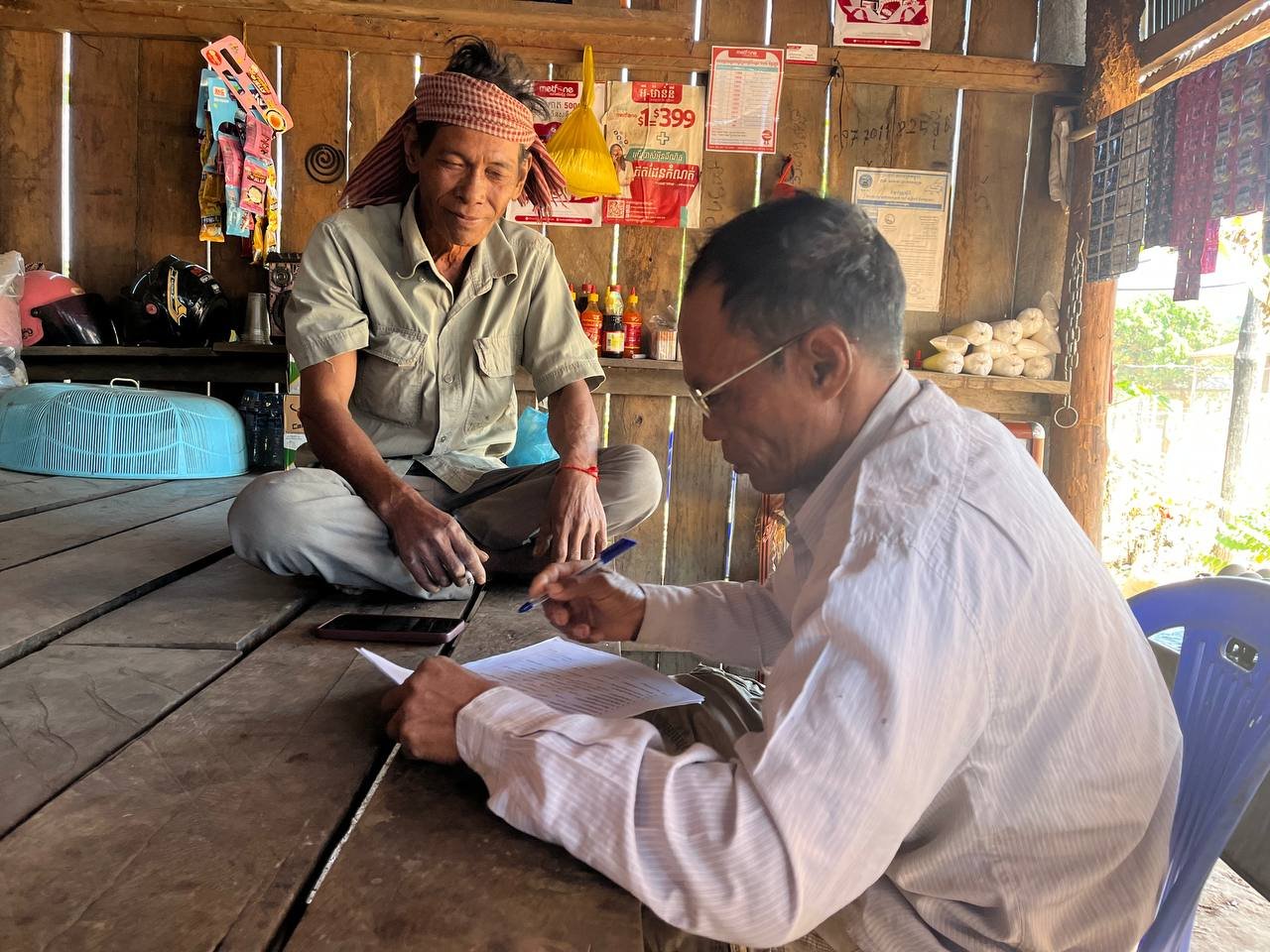 | | Community surveys and training. Photo courtesy Dr. Saret Bun | |
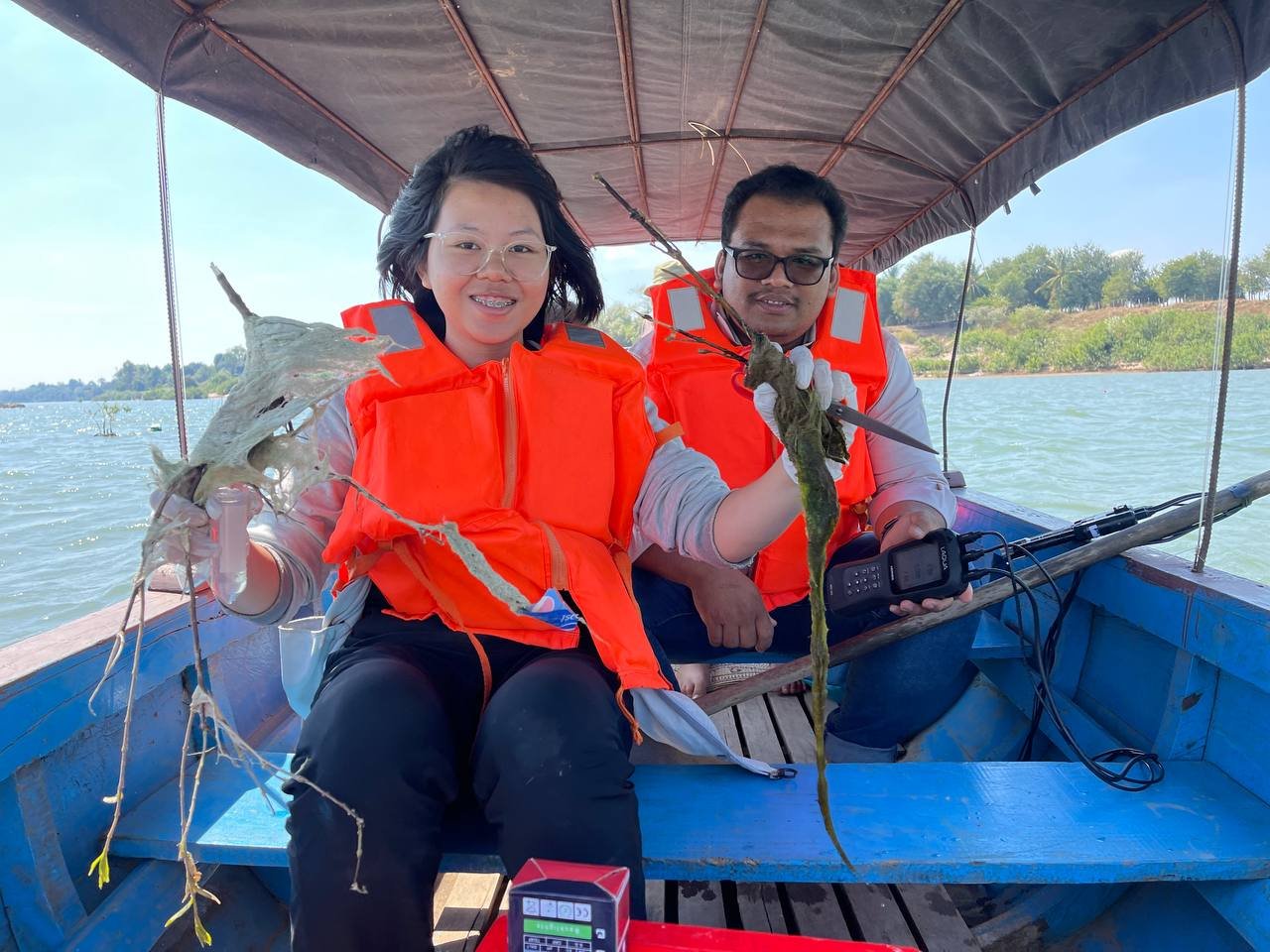 | 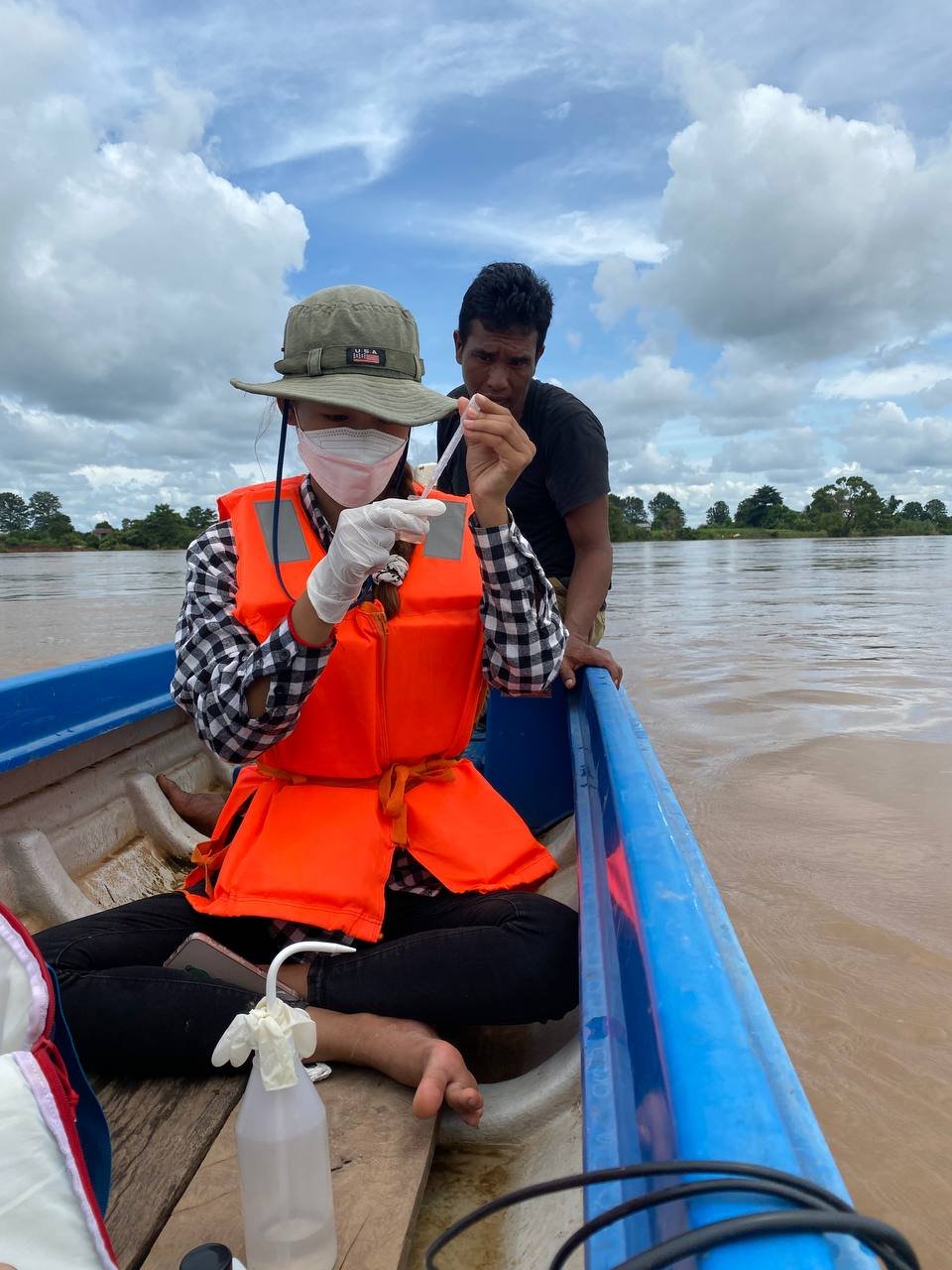 | | Research in action. Photo credit: Dr. Saret Bun | |
Back to PEER Cambodia Grant Recipients
|
|
|
|








